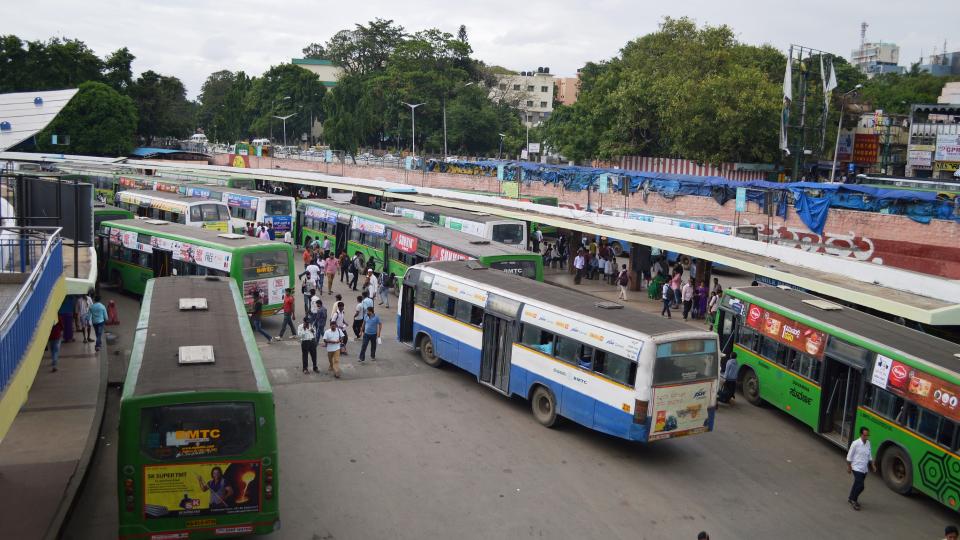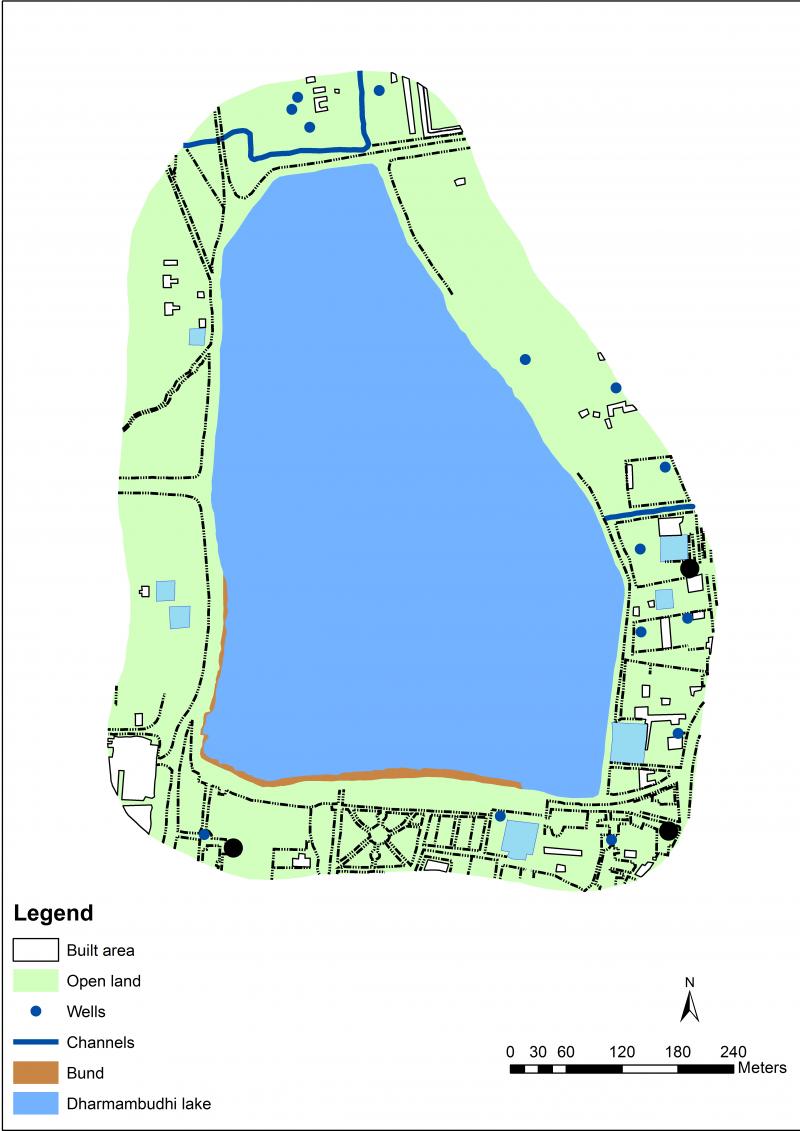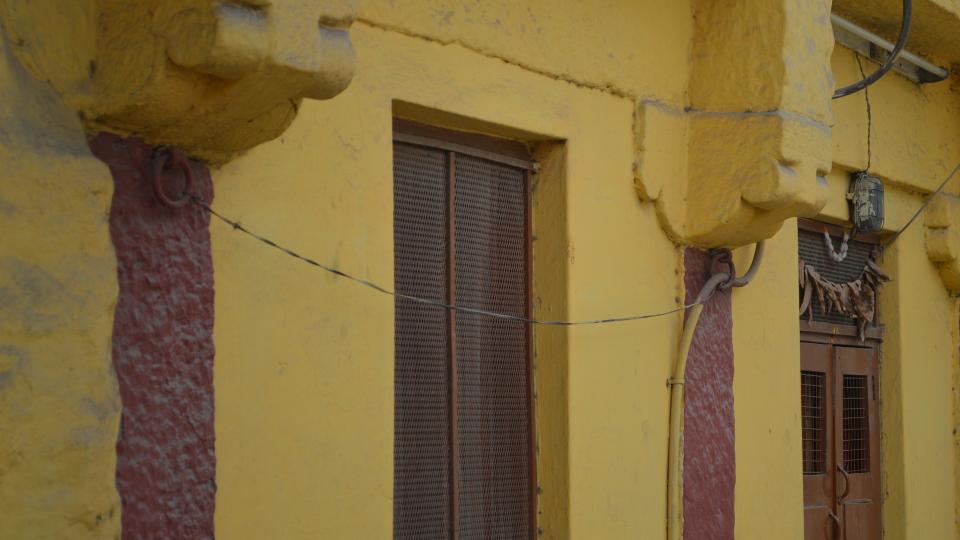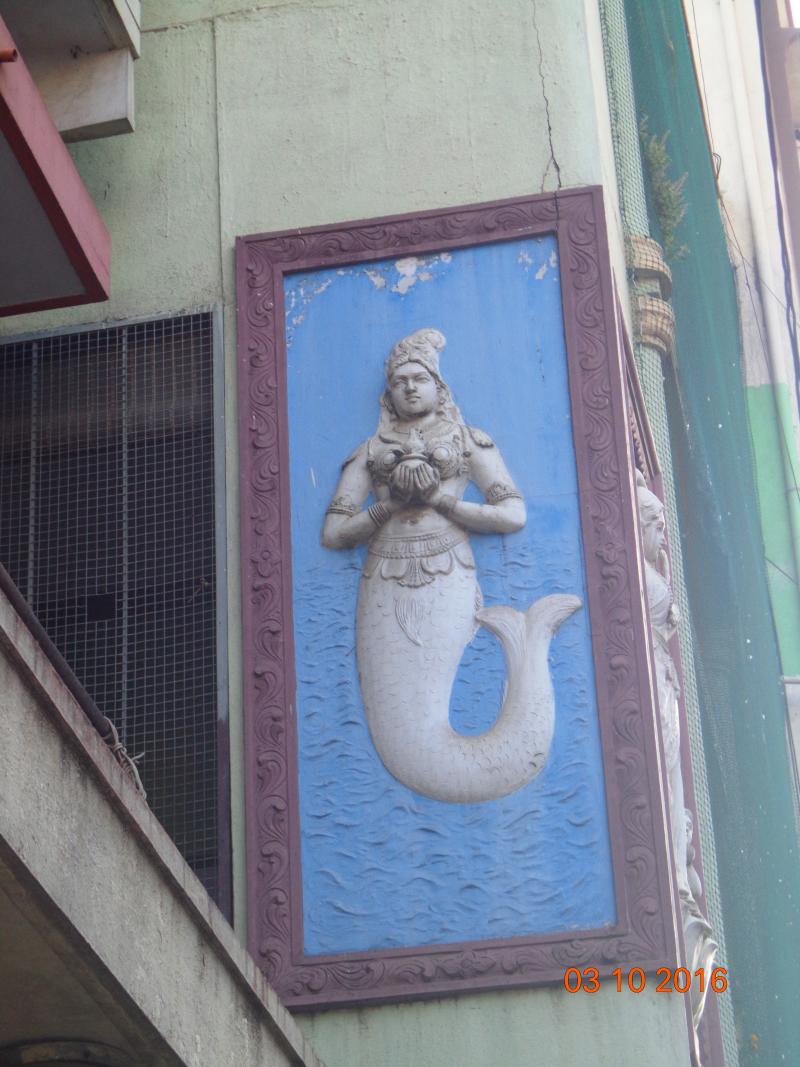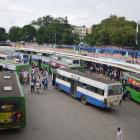As we began writing this article, the South Indian city of Bangalore witnessed a weekend of torrential rain, leading to flash floods and traffic jams. One of us (Hita) was stranded at Bangalore’s central bus terminus (Figure 1), watching with other commuters as water rapidly flooded into the area. Passengers remembered that the bus terminus that was steadily flooding was on the site of the former Dharmambudhi lake. As the ticket collector said, “kere mele bus stand haakidre innenaaguthe?” (If one builds a bus stand on a lake, what else would you expect?—translated from the local language, Kannada.)
Bangalore is an unusual old city, located as it is in an inland, semi-arid area, distant from rivers and major sources of water. The city relied for its survival on an extensive, cascading engineered system of lakes (or tanks) that later lost their prominence. In this article (last in a four-part series on the ecological history of the water bodies of Bangalore), we focus on the transformation of the Dharmambudhi lake into the city’s central bus terminus, and what this means for the ecological memory of the city.
An inscription dating from the thirteenth century and speaking of the “lands below the big tank of Vengaluru [an older name for the city]” may be the earliest mention of the Dharmambudhi water body. When a medieval war chieftain, Kempe Gowda, founded the modern city of Bangalore in the middle of the sixteenth century, this lake was one of its major sources of water. In colonial times, the lake was an important symbol of the city’s natural beauty. Since the lake was located near the city’s main railway station, dance performances were performed on floats on the water to welcome arriving dignitaries, including notably Prince Albert in 1889 (Figure 2).
The lake was also an important sacred site for local festivals, including the city’s most celebrated festival, the Karaga, which revolves around local water bodies. When the lake overflowed during the monsoon, a theppotsava was held in celebration (Figures 3 and 4). Oil lamps were made of rice flour, lit, and set afloat at night on the lake: a beautiful sight.
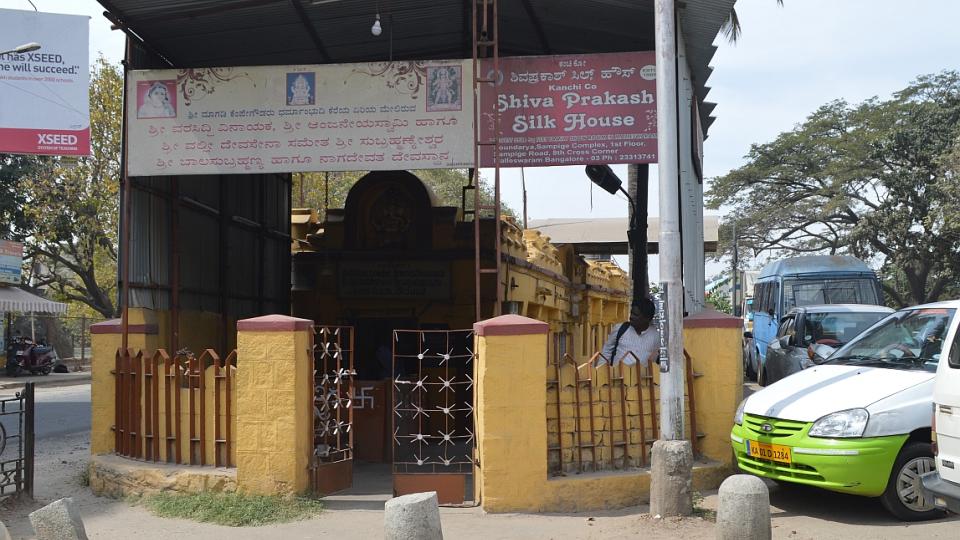
Fig. 3. The Varasiddhi Vinayaka temple dedicated to the lake deity associated with the Dharmambudhi lake. The first line of the board on the left states, in Kannada, “The temple located on the bund of Magadi Kempegowda’s Dharmambudhi lake.”
Fig. 3. The Varasiddhi Vinayaka temple dedicated to the lake deity associated with the Dharmambudhi lake. The first line of the board on the left states, in Kannada, “The temple located on the bund of Magadi Kempegowda’s Dharmambudhi lake.”
Photograph by Hita Unnikrishnan.
© 2016 Hita Unnikrishnan.
This work is used by permission of the copyright holder.
Dharmambudhi, together with Karanji, Jakkarayana, and Hanumanthapura lakes, supplied water to the native pete area (colonial Bangalore was divided into two zones—the anglicized, British-governed Cantonment, and the native zone called the Pete). Of these lakes, the Dharmambudhi was considered the most important, and water was diverted from the other water bodies to this lake in times of drought during the late nineteenth century. Water from the Dharmambudhi lake was directed into stone troughs placed at strategic locations on the various streets of the city, where it was collected by householders.
With the advent of piped water to the native city in the middle of the nineteenth century, the lake lost its importance and was drained in the early 1900s. The grassy maidan (plain) on the former lake bed hosted a circus and a theatre company. The grandson of the founder of the theatre company, Hirannaya Nataka Mandali, recalls that the maidan regularly flooded during the monsoon. The makeshift theatre grounds were lined with tin and asbestos sheets to keep the feet of the patrons dry.
Fodder for livestock was sold on the lake bed, which became known as a hullu kaval or grass depot. In 1931, Jawaharlal Nehru (later independent India’s first prime minister) spoke at this location. As the struggle for Indian independence began to intensify, a number of political rallies were held, and the area came to be called “Gandhi sagara” (after Mahatma Gandhi). Even today, a part of the surrounding area is known as Gandhinagar. Following Indian independence in 1947, the area to the southwest of the lake was named Subhashnagara in honor of Subhash Chandra Bose, the famed Indian freedom fighter. The former watery identity of the lake thus began to be just a memory, one probably made even more distant through successive renaming.
After Indian independence, many former lakebeds were viewed as vacant spaces for construction. In the early 1960s, the Dharmambudhi maidan was filled in to construct the city’s central bus terminus. Until then, the area contained a number of large open wells and stepwells, which provided water to local residents. Following the construction of the bus terminus, many wells began to dry up, and others were closed and built over. Today, the Dharmambudhi lake has faded from public memory except during floods, and through striking water-related motifs that are still to be found in houses around this neighborhood (Figure 5).
The story of Dharmambudhi lake is thus one of the transformation of an urban commons to a bus terminal because of prolonged disuse, leading to the loss of ecological services, and therefore of perceived value. In modern Bangalore, many of the city’s lakes continue to support livelihoods such as agriculture, livestock rearing, fishing, and foraging, and are integral to the cultural fabric of local communities. Yet, present-day governance regimes that formally ban or informally exclude these livelihoods through strategies such as Public-Private Partnerships distance traditional communities from lake resources. It is important to draw on a knowledge of social-ecological connections from the past to create an equitable and sustainable urban future for fast-growing cities such as Bangalore.
How to cite
Unnikrishnan, Hita, and Harini Nagendra. “The Lake That Became a Bus Terminus.” Environment & Society Portal, Arcadia (Spring 2019), no. 2. Rachel Carson Center for Environment and Society. doi.org/10.5282/rcc/8493.
ISSN 2199-3408
Environment & Society Portal, Arcadia
 This work is licensed under a Creative Commons Attribution 4.0 International License.
This work is licensed under a Creative Commons Attribution 4.0 International License.
2019 Hita Unnikirshnan and Harini Nagendra
This refers only to the text and does not include any image rights.
Please click on an image to view its individual rights status.
- Nagendra, Harini. Nature in the City: Bengaluru in the Past, Present, and Future. New Delhi: Oxford University Press, 2016.
- Nair, Janaki. The Promise of a Metropolis: Bangalore's Twentieth Century. New Delhi: Oxford University Press, 2008.
- Unnikrishnan, Hita, B. Manjunatha, and Harini Nagendra. “Contested Urban Commons: Mapping the Transition of a Lake to a Sports Stadium in Bangalore.” International Journal of the Commons 10, no. 1 (2016): 265–93. doi:10.18352/ijc.616.
- Unnikrishnan, Hita, Sreerupa Sen, and Harini Nagendra. “Traditional Water Bodies and Urban Resilience: A Historical Perspective from Bengaluru, India.” Water History 9, no. 4 (2017): 453–77. doi:10.1007/s12685-017-0199-9.
- Srinivas, Smriti. Landscapes of Urban Memory: The Sacred and Civic in India’s High Tech City. Hyderabad: Orient Blackswan, 2004.
- Ranganathan, Malin. “Storm Drains as Assemblages: The Political Ecology of Flood Risk in Postcolonial Bangalore.” Antipode 47, no. 5 (2015): 1300–20. doi:10.1111/anti.12149.


